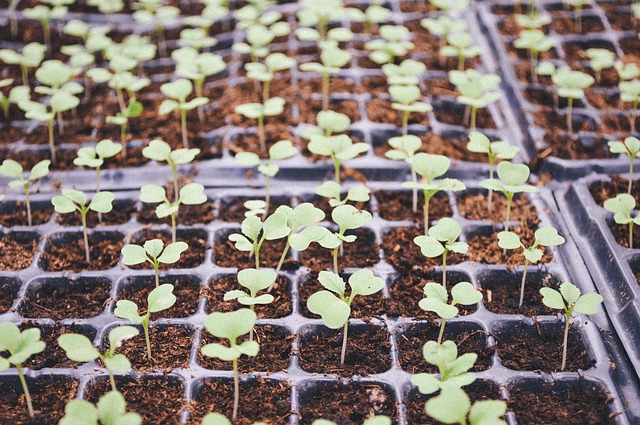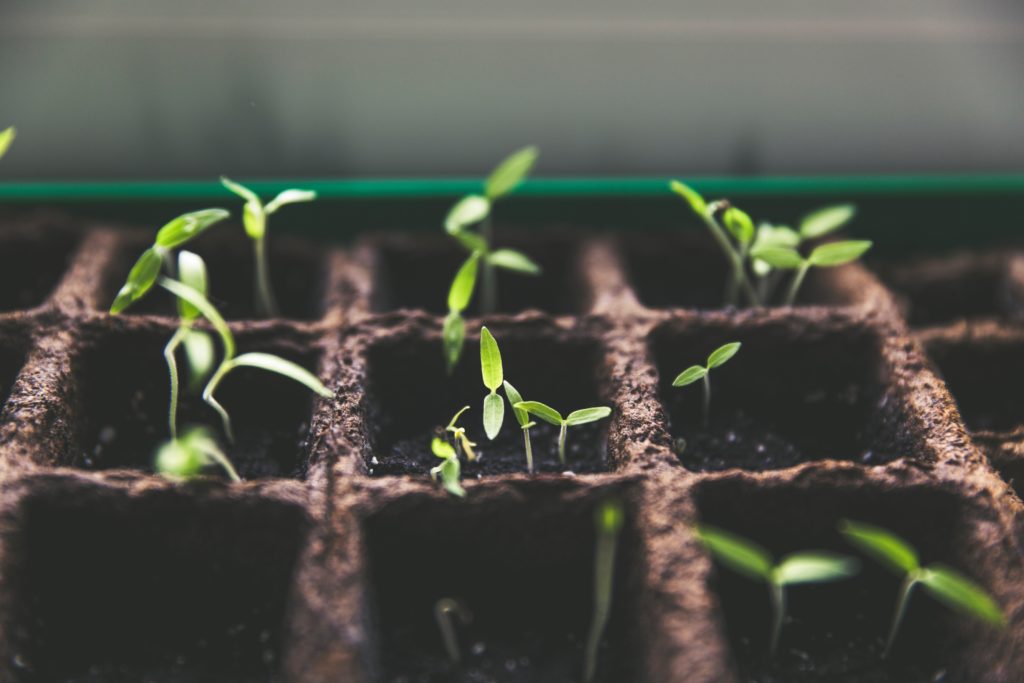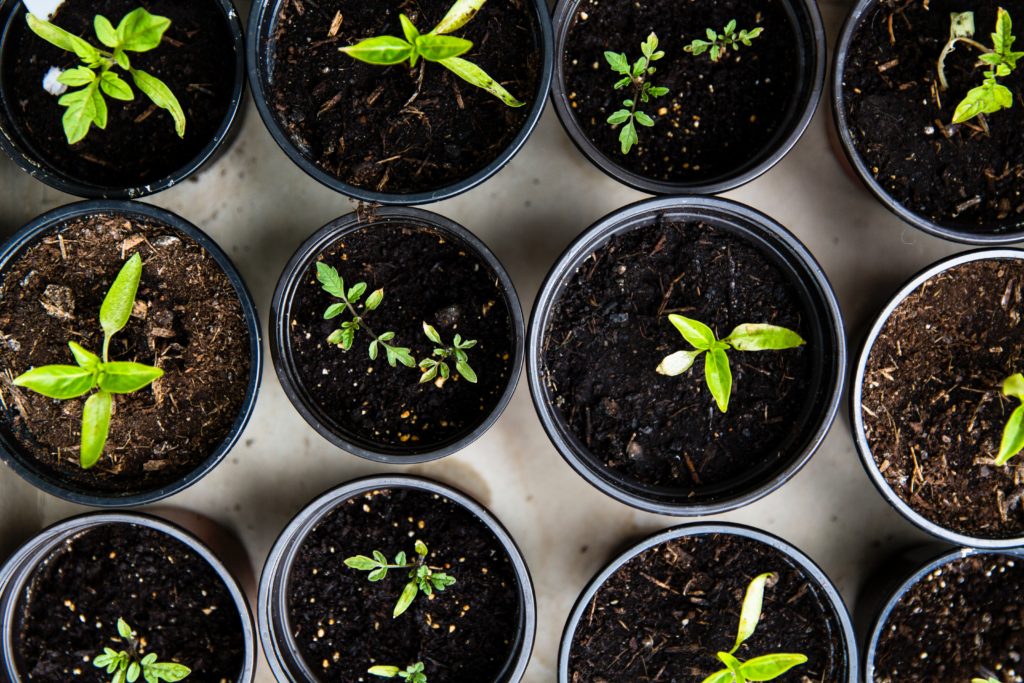At my farm, we just finished up the first round of seeding in the greenhouse to get ready for all our heat-tolerant summer crops. Some of these crops just take so long to grow, that we’re even a little late to the game. But with this wet spring, better late than never. So many farmers have trouble with this timing in the spring, either jumping the gun and having trays upon trays of plants lavishing in the greenhouse waiting for the ground to dry, or waiting too long and not being ready to get plants in the ground when it’s finally ready.
But for the home garden, you’re just in time to start sowing those zinnias, tomatoes, eggplant, sunflowers, and whatever other seeds you’ve been hoarding. Here’s my seed starting primer, in five easy steps.

Step 1: Get your seed starting mix ready
It’s important to find a mix that you like and then spend some time observing how it behaves. There are a million different products and recipes out there, and many of them will work for you. They need to include, generally: 1) some organic matter (compost or nutrients), which some people choose to leave out until the plants size up a bit, 2) something to provide some aeration and drainage (perlite and vermiculite and common ingredients) and 3) Some finely granulated material
Before filling your trays with soil mix, you’ll want to make sure it’s evenly moist throughout.
Step 2: Choose your trays and fill them with soil mix

You can start seeds in almost anything. The best receptacles will have some drainage holes in the bottom and will be about 3 – 4″ deep. Six-packs, cell trays, or something else that has dividers to separate the different types of seeds from one another will make your life easier. But a big flat shallow box will work too, just make sure to space the seeds far apart from one another and label well.
Next up, fill your trays or boxes to the top, and give them a little gentle drop from just a few inches off the table or ground in order to settle any air pockets that are sitting in there (you don’t want your roots growing into air!). You can then smooth the top flat with either your hand or a ruler or stick. If the surface of the tray’s soil isn’t flat, water can gather and algae can grow, and air movement is stalled. It’s always a good idea to start seeds in the best conditions possible.
Step 3: Make small indents in the center of each cell, and place the seeds in there.
First, look at the size of the seeds you’re about to sow. A good rule of thumb is to bury seeds about twice as deep as they are wide. So for many seeds, this will mean that you barely bury them much at all. Once I know the size of the seed I’m about to sow, I make an indent with my finger for each seed I’m about to sow – the depth of the indent corresponding to the size of the seed. You can then cover the seed lightly either by adding a pinch of soil mix on top.

For each plant you want, it’s a good idea to sow a few extra seeds in case they don’t all germinate. This is especially true if you’re using old seed, as viability goes down with each year. If all of the seeds you sow do germinate, it’s not a problem as you can just thin them out later.
Step 4: Water them in!
Gentle, but thorough should be your watering goal when you start seeds. With especially tiny seeds you want to be careful not to wash them away with a harsh spray. Before the seeds germinate, they need to stay pretty moist. This means that you’ll be watering lightly – just to saturate the top ¼ inch of soil or so – a few times a day, or whenever the soil surface visibly shows signs of drying out. As the seeds germinate and grow, you can decrease the frequency and increase the depth of your watering – always aiming to soak the area just below your roots in order to coax them towards the moisture.
Step 5: Choose the location for your seed tray

For the home gardener, I think a sunny windowsill is the best location to start seeds. Light and a bit of warmth are important, as is making sure you choose a place that you’ll be sure to walk by a couple of times a day.
And voila! Watch them grow, make sure they are in a spot with good air circulation and water them appropriately according to their size and how often they dry down. You’ll know its time to plant them outside when they have a few sets of leaves, and the roots have developed a strong branching system (don’t check for this too often, but after 5 weeks or so you can gently turn the tray over and wiggle a transplant or two out in order to take a look).
This method to start seeds will work for many, many varieties, but there are always exceptions and seeds that require special requirements. When in doubt, try it out! Seeds are cheap, and is there anything better than sowing seeds in the spring?

 Family
Family

